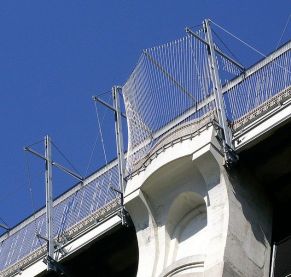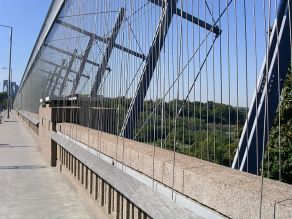On the weekend, my father and I were running errands and driving all over the city. We passed under the Prince Edward Viaduct bridge (along Bloor), which prompted a conversation about its barriers preventing jumps (aka suicides). We passed another bridge along Main Street (between Danforth and Gerrard) and noticed that it did not have any barriers. Our conversation sparked an interest, a curiosity.
Instead of looking at the population who are suicide-prone or who have committed suicide by jumping, I would investigate bridges as the tool used to carry out the suicide. This may reveal quite a bit about the person’s reasoning. My train of thought is the following:
– Why are some bridges “popular” to jump off of while others – that are equally as deadly – not? Why is there a mystique that surrounds some bridges and not others?
Are there features of certain bridges that make them a more “attractive” option than other bridges or other suicide methods? For example, are bridges with historical meaning used more often than modern bridges? Are bridges that are over water used more commonly than bridges over traffic?
If I were to conduct this research, a complication might be incomplete or missing records of suicides and/or methods of suicide. Another complication could be that the research may be incomplete without considering the human element. This could mean a study about an artifact has turned into a psychology study.
I have attached two pictures courtesy of Wikipedia of the “Luminous Veil” – what the Prince Edward Viaduct’s barrier is called. These are pictures of the actual one on that bridge. Here is a link to the Wikipedia page: http://en.wikipedia.org/wiki/Luminous_Veil
Thanks,
Camille Johnson



I can only imagine this would be a rich and complex topic, and there is probably more information out there than you think. There’s some really interesting stuff on bridges and a kind of suicide tourism. The Golden Gate Bridge is a fascinating case (it’s the 2nd-most used suicide spot in the world, 1st on a list of bridges – but every effort to install a suicide barrier has been thwarted, often for what basically amount to aesthetic reasons!).
The Bloor viaduct was second *in the world* for annual suicides off a bridge, after the Golden Gate – but the intriguing part is that, after they installed the barrier, the overall suicide rate by jumping in Toronto remained unchanged (if you’re interested, check out
Sinyor, M., Levitt, A.J. Effect of a barrier at Bloor Street Viaduct on suicide rates in Toronto: Natural experiment (2010) BMJ (Online), 341 (7765) DOI:10.1136/bmj.c2884)
Thank you Anna for these facts and figures. You mention an intriguing expression, “suicide tourism.” Did you coin this or find it? I can imagine that San Francisco would be in a difficult situation since the Golden Gate Bridge is such an important symbol of the city – I can understand why the authorities wouldn’t want to add something to the Bridge that represents ultimate despair and hopelessness. It would be interesting to know the statistics – for both cities – of jumpers who are “tourists” and travel to the city to commit suicide.
Camille
I can’t say I made up “suicide tourism” – I’m not sure where it first came from, but it’s around. It has a wikipedia page (http://en.wikipedia.org/wiki/Suicide_tourism) but that’s more focused on the euthanasia movement and I *think* I’ve heard the term used in a wider context. There’re suicide barriers on the eiffel tower and the empire state building because they were turning into a rather morbid kind of destination – it’s an interesting, if depressing subject.